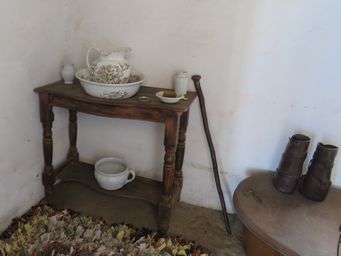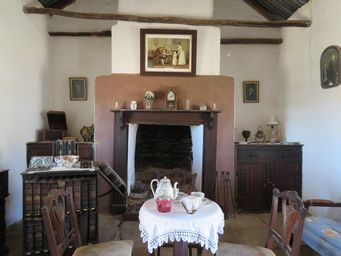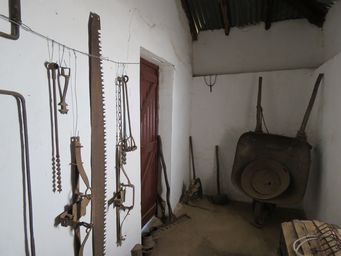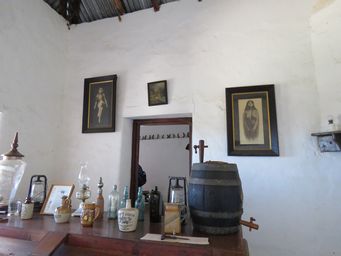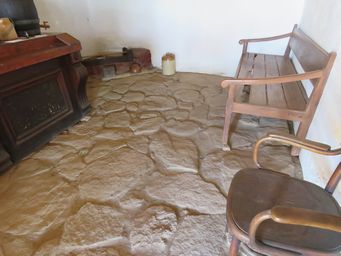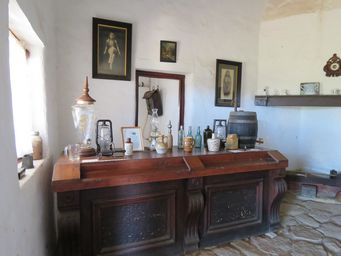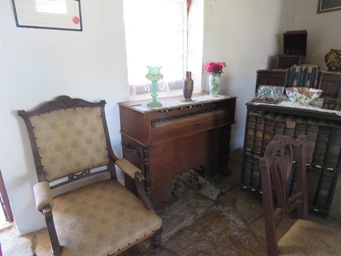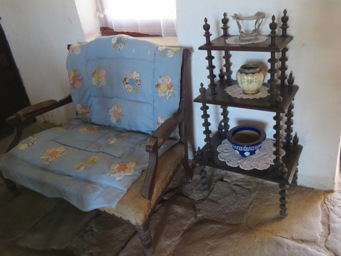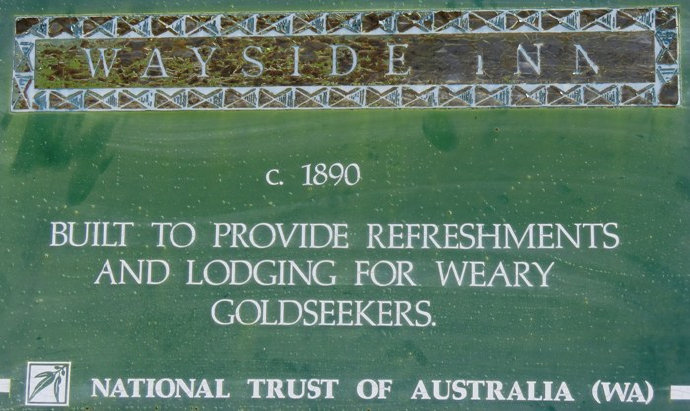Australia So Much to See

In the bar a number of bottles, a beer keg and a few lanterns are displayed. Raunchy photos (for the era) decorate the walls. Bars were for men only.
Photos below show the size of the room and feature the stone floor as used throughout the homestead and Inn. Many farm and station homesteads of the time would have had only dirt floors.
This also has a homemade shag rag rug on the floor for warmth and comfort.
A Piece of String, Stories of the Nungarin District
Signage on site
The Baandee CWA Rest Room was the first Rest Room to be purpose built by the Country Women’s Association in Western Australia, in
1928. Baandee was a small siding 32 kilometres west of Merredin on the main east-west railway line. When the broad-gauge
line was built, it by-passed the small town, which subsequently fell into decline and in 1968 the local branch of CWA was forced to
disband. In 1924, Nungarin was the first branch of the CWA to be formed in Western Australia. The first purpose-built
rest room was built in 1928 at Baandee, and it was fitting that this rest room should be preserved in the Nungarin district. Hence this building was transported to Mangowine and restored. It is still used for meetings of the local CWA branch, which
has three members.
The Country Women’s Association was initiated in Australia in 1922, with the first branch in Western
Australia in 1924. CWA branches throughout the state were an important meeting place for women, particularly those otherwise
isolated in rural areas.
Funds are raised to support victims of natural disasters as well as those people doing it tough in
today's economic climate, as well as offer scholarship in further education, particularly medicine, nursing and dental.
With
their own premises in many country towns, members of other branches and their families are welcome to use their rest rooms.
In 1938 the CWA opened a hostel in Northam to allow 12 girls, daughters of local CWA members, to attend Northam Senior High School. Northam was the first of six CWA Hostels, where country students could board to attend the high school. In 1969 these were relinquished
when the Government took on the responsibility of accommodating students at country high schools.
The CWA Cookbook was the standard
in all homes.
Charles and Jane Adams were married when she was around 17 years of age. They had twelve children, of which only six outlived
Jane. Charles died at the age of 49 and was buried at Mangowine, and Jane continued farming and caring for her family, dying
at Mangowine at the age of 83, she was buried at Nungarin. In 1935 memorial gates at the Nungarin Hall were erected in her memory
in recognition of her part in pioneering the area, and for the help “Granny Adams” gave the newer famers and settlers. These
were later moved to the entrance of the Nungarin Cemetery.
